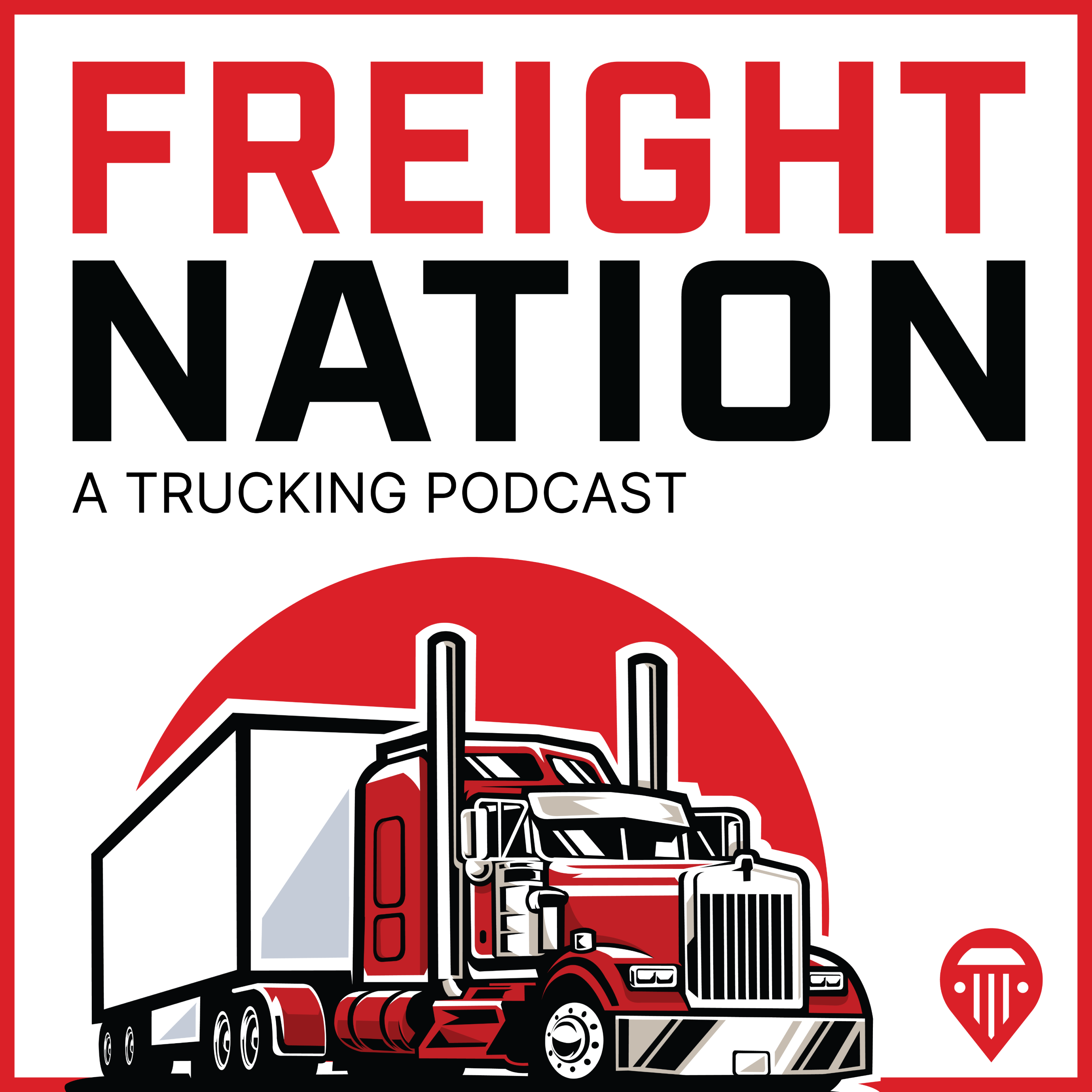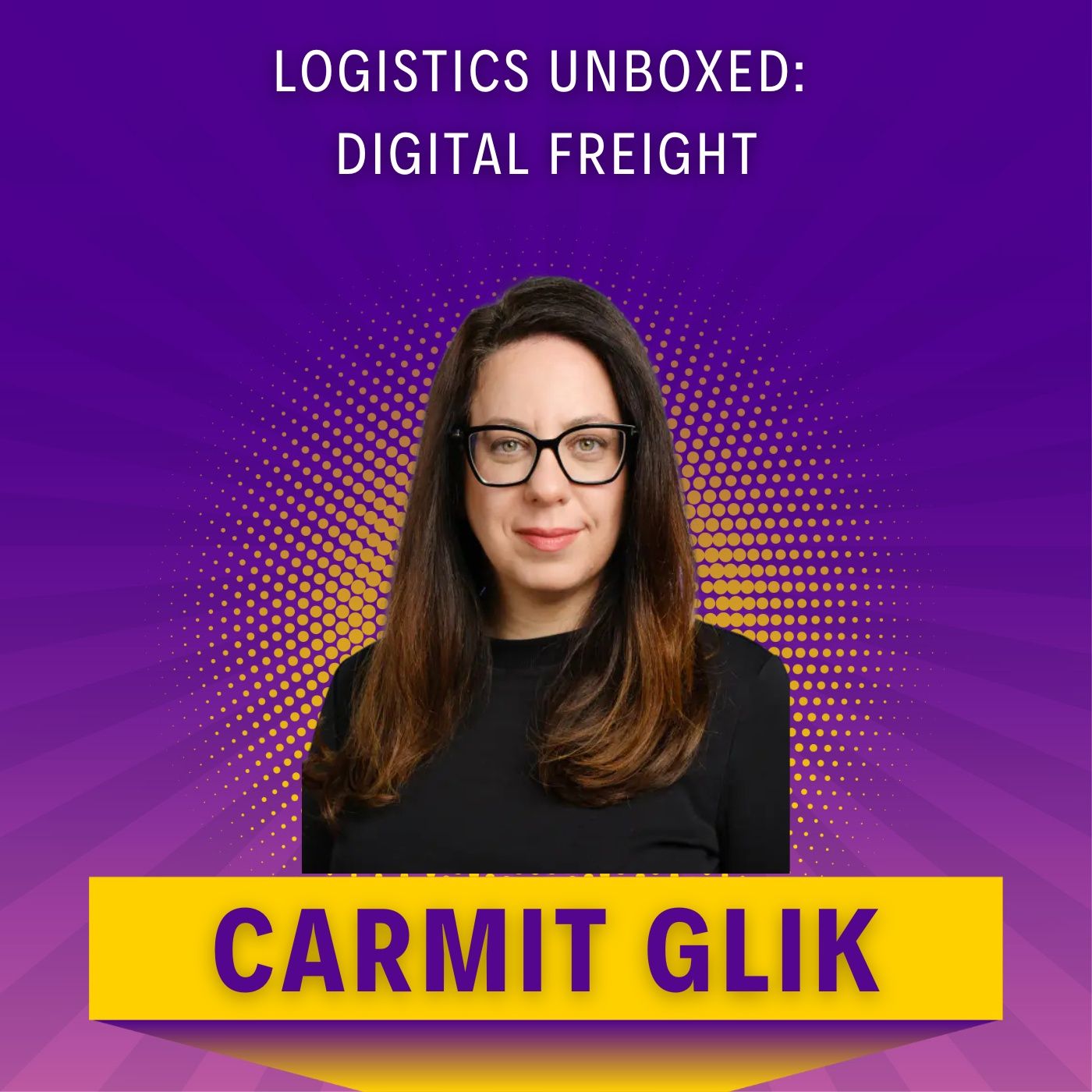
Logistics at a Crossroads
Where freight meets real life.
Hosted by Gia — logistics veteran, cancer survivor, and truth-teller — “Logistics at a Crossroads” explores the industry, identity, and the grit it takes to keep showing up. Freight. Feelings. No filter.
Logistics at a Crossroads
🎙️ Episode 13: Who’s Ready to Berth the Vessels?
📍 Theme: Global manufacturing shifts, port pressure, and the women rising in logistics.
🎶 Intro music: “Emotional Piano” sets the tone — reflective, but ready.
As vessels reroute and nations reposition their manufacturing footprints, one thing is clear: capacity isn’t just a container issue. It’s a human one.
In this episode of Holding the Line, we explore what it really takes to berth the vessels, staff the ports, and run the show behind the scenes — especially as trade lanes shift and workforce dynamics evolve.
From yard delays and berth availability to the silent burnout creeping through operations teams, Episode 13 pulls back the curtain on the layers of readiness we don’t often talk about. Especially the digital dispatchers, female freight leaders, and mid-tier managers doing the grunt work without the glory.
What we cover:
⚓ The ripple effects of new vessel rotations and labor shortages
🌍 The illusion of “global readiness” vs. what’s happening on the ground
💡 Why social media, soft skills, and emotional intelligence are becoming logistics assets
🧭 A shoutout to the women holding digital clipboards and real supply chains together
🎶 Outro music: “nwhere” fades in as we close — a subtle nod to the uncertain, winding routes ahead.
If you’ve ever asked, “Who’s even ready for what’s coming?” — this episode says: maybe it’s us.
🎧 New episodes every week.
Follow Logistics at a Crossroads on your favorite podcast platform.
📬 Want to connect?
Find me on LinkedIn: linkedin.com/in/reginahunter
Visit the blog: giakat.blogspot.com
Gia’s voice (steady, urgent):
“Everyone’s asking who can replace China in global manufacturing. But what if the real question is — who can keep the line moving when the pressure hits?
In Episode 13, we break down the race for resilience.
Holding the Line: A Logistics at a Crossroads Podcast.
Gia (welcoming):
Hey everyone — and welcome back to Holding the Line: A Logistics at a Crossroads Podcast.
I’m your host, Gia, and today, in Episode 13, we’re tackling one of the biggest questions in global trade:
What happens when China is no longer the center of the manufacturing world?
Because here’s the truth:
Global manufacturing isn’t anchored anymore.
The vessels have set sail.
For years, China was the default port of call—efficient, fast, and fully integrated.
But now? Tariffs. Geopolitics. Rising costs. Environmental shifts.
They’ve all pushed companies to chart new courses.
🛳️ And the global manufacturing base? It’s in motion.
⛴️ The New Ports on the Horizon
So—who’s ready to berth them?
Let’s look at the contenders:
- India is waving from the shore, promising tech talent and government-backed incentives. But behind the docks, infrastructure is still under construction. Roads, utilities, and logistics corridors are improving—but slowly.
- Vietnam is racing to meet demand. Electronics, apparel, and industrial goods are already flowing. But the harbor’s crowded, and its infrastructure is starting to stretch thin.
- Mexico sits just across the bay from the U.S. Nearshoring is no longer theoretical—it’s happening. But political instability and capacity gaps can still disrupt what should be a smooth ride.
- Malaysia and Thailand offer calm waters, strong regulatory stability, and established trade lanes. But limited labor pools and space constraints mean growth might stall just when demand surges.
For decades, the question wasn’t where to manufacture—it was how fast could we move it out of China?
And China delivered:
- Massive scale
- Unmatched technical skill
- An ecosystem of supply chain integration that left others behind
But today, the question has changed. With rising tariffs and unstable trade relations, the real concern is this:
What happens if we can’t manufacture in China at all?
🌐 Enter the Global Race
Let’s be clear:
There’s no one-size-fits-all replacement for China.
There are, however, countries stepping up—each with strengths, growing pains, and logistics realities to reckon with.
🇮🇳 India – may be waving and have a massive workforce. Booming tech sector. Pro-business momentum. But: port congestion, blackouts, and inconsistent lead times make time-sensitive delivery a gamble.
🇻🇳 Vietnam while they- are racing to meet demand while being a magnet for consumer goods, and have a Strong regional connectivity. But: it’s reaching the edge of capacity. A single disruption can create weeks of delay.
🇲🇽 Mexico Just there across the bay & yes the Proximity to U.S. consumers will Lower transportation costs. Achieve a Faster delivery. YET
infrastructure disparities and political fluctuations still pose real risks.
🇲🇾🇹🇭 Malaysia & Thailand may offer us some calm waters and be
Advanced in semiconductors and electronics. Could very well be Steady trade partners.
But: scaling quickly enough to absorb redirected global volume? That’s still a question mark.
🧭 From Centralized to Fragmented
Here’s the real shift:
The future of manufacturing won’t revolve around one country.
It will be regional, resilient, and deeply data-driven.
We’re seeing the rise of regional ecosystems blend of:
- Nearshoring for speed
- Reshoring for control
- Selective offshore partnerships for cost
This isn’t just a sourcing strategy.
It’s supply chain survival.
And logistics?
It’s the deciding factor.
From port access to customs agility, from inventory placement to inland transport—if even one link in the chain breaks, the whole network feels it.
💡 So What Now?
If you’re a planner, operator, buyer, or executive—this is your call to zoom out.
Ask the questions that matter:
- Can we pivot suppliers without compromising quality?
- Are our systems built for real-time visibility across geographies?
- Are our partnerships flexible enough to move with global pressure?
Because the next manufacturing leader won’t just offer low-cost labor.
They’ll offer trust.
They’ll deliver under pressure.
They’ll hold the line—when it matters most.
⚓ Final Thought: The Port You Choose Matters
Vessels don’t just need a place to dock.
They need:
- Infrastructure that can move containers fast
- Skilled teams that handle complexity
- A logistics backbone that keeps it flowing
And most of all?
Predictability.
The race isn’t to replace China.
The race is to become the most reliable port in a sea of uncertainty.
So ask yourself:
🧭 Where’s your cargo headed next?
🎶 [Outro beat fades in: “Hustle Harder” by u_79vu1xctae]
This was Episode 13 of Holding the Line: A Logistics at a Crossroads Podcast.
I’m Gia — thanks for sailing with me today.
Until then—stay steady, stay strategic… and know that I’ll be navigating the crossroads right along with you.
Podcasts we love
Check out these other fine podcasts recommended by us, not an algorithm.

Supply Chain Revolution
Sheri Hinish, SupplyChainQueen
Supply Chain - Unfiltered
Institute for Supply Management®
The Bootstrapper's Guide to Logistics
Nate Shutes
Everything is Logistics
Blythe Brumleve
WHAT THE TRUCK?!?
FreightWaves
Freight Nation: A Trucking Podcast
Truckstop
Logistics Unboxed: Digital Freight
The Advisor W/ Stacey Chillemi
The Happiness Lab with Dr. Laurie Santos
Pushkin Industries
The Wandering One Podcast
The Wandering One Podcast
We Can Do Hard Things
Treat Media and Glennon Doyle